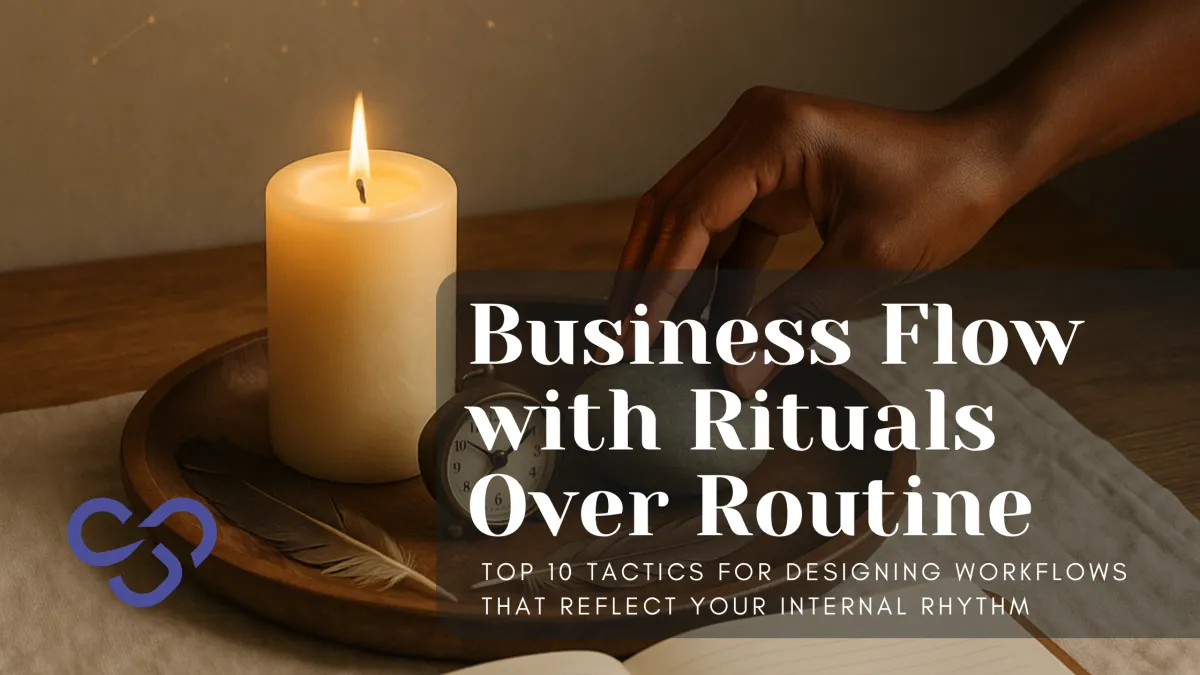
Business Flow with Rituals Over Routine
Top 10 Tactics for Designing Workflows That Reflect Your Internal Rhythm
As visionary leaders and neurodivergent professionals, we often find ourselves fighting against traditional business structures that feel rigid and disconnected from our natural energy patterns.
The conventional wisdom of "stick to a routine" can feel suffocating when your brain operates on a different frequency.
Instead of forcing yourself into a one-size-fits-all system, what if you could design workflows that honor your unique internal rhythm while still achieving exceptional results?
This shift from routine to ritual transforms how you approach business automation, client relationships, and collaborative partnerships.
When you design systems that work with your natural patterns rather than against them, you create sustainable efficacy that doesn't require constant willpower or energy depletion.
Understanding the Difference: Rituals vs. Routines
Routines are external frameworks imposed upon us, rigid schedules that demand compliance regardless of our internal state.
Rituals, however, are intentional practices that connect us to our purpose and energy. They're flexible containers that adapt to our needs while maintaining structure and meaning.
For visionary coaches, consultants, and speakers, this distinction becomes significant when designing business processes that support both productivity and well-being.
Your CRM system, client interactions, and collaborative projects can feel like extensions of your authentic self, rather than foreign obligations.

Tactic 1: Map Your Energy Landscape
Before automating any aspect of your consulting business, spend two weeks tracking your natural energy rhythms.
Notice when you feel most creative, analytical, social, or introspective.
This data is the foundation for designing workflows that work with and for your biology rather than against it.
Create energy-based time blocks in your business automation system.
If you're using platforms like GHL (GoHighLevel) or similar CRM tools, schedule your most demanding client calls during peak energy hours and reserve administrative tasks for lower-energy periods.
This approach helps visionary professionals maximise their natural strengths while minimising energy drain.
Consider how this applies to your networking activities as well.
Rather than forcing yourself into traditional networking events, identify safe networking spaces for visionary coaches where you can connect authentically during times when you feel most socially engaged.
Look for opportunities that expand your identity and offer new perspectives for you to try on in the way you contribute to your community.

Tactic 2: Design Transition Rituals
The space between tasks often determines the quality of your work.
Instead of jumping directly from client calls to creative projects, create intentional transition rituals that help you shift gears mindfully.
These might include a five-minute meditation, a brief walk, or a specific playlist that signals the change in focus.
When you automate your consulting business processes, build these transitions into your scheduling system.
Your calendar should breathe deeply.
This is particularly important for trauma-informed networking approaches, where abrupt transitions can trigger stress responses.
By honoring the need for gentle shifts between different types of engagement, you create a more sustainable and healing-oriented business practice.

Tactic 3: Batch Similar Energies, Not Just Tasks
Traditional productivity advice suggests batching similar tasks together.
But for visionary professionals, it's more effective to batch similar energy requirements. Group activities that require the same type of mental or emotional engagement, regardless of their specific nature.
For example, combine client strategy sessions with business planning rather than grouping all phone calls together.
Both activities require visionary thinking and strategic analysis, even though one involves external communication and the other internal reflection.
Your business automation tools should support this approach by allowing you to categorise activities by energy type rather than just task category.
This creates workflows that feel natural and sustainable over time.

Tactic 4: Create Seasonal Business Rhythms
Just as nature operates in cycles, your business can mirror these natural rhythms.
Design quarterly themes that align with your industry's natural ebbs and flows, your personal life circumstances, and seasonal energy patterns.
Spring might focus on launching new collaborations and finding collaborators by project and skillset.
Summer could emphasise intensive client work and speaking engagements.
Fall might center on reflection, course corrections, and preparing for the next cycle. Winter could be reserved for planning, learning, and internal development.
This approach works particularly well for diverse professional communities where members have varying cultural backgrounds and personal rhythms.
A collaborative expert directory that honors seasonal approaches allows professionals to engage when they're most aligned and step back when they need restoration.

Tactic 5: Build Flexibility Into Your Systems
Rigid systems break under pressure, and flexible systems adapt and evolve.
When designing business automation for coaches and speakers, create multiple pathways to achieve the same outcome.
If your primary client onboarding sequence doesn't feel right on a particular day, have alternative approaches ready.
This might mean having both video and written options for client check-ins, multiple ways to schedule appointments, or various communication channels depending on your current capacity and preference.
Your CRM should accommodate your proclivities, not force you into narrow channels of operation.
Gamified networking platforms can support this flexibility by offering multiple ways to engage with the community based on your current energy and interests.

Tactic 6: Honor Your Processing Style
Not all visionary leaders process information the same way.
Some need to talk through ideas before they crystallise, while others require quiet reflection time.
Some think best while moving, others while completely still.
Design your workflows to honor your unique processing style.
If you're a verbal processor, build in time for brainstorming calls or voice memos before making decisions.
If you're a visual thinker, incorporate mind mapping or visual planning tools into your business processes.
Your automation systems should support rather than override your natural processing patterns.
This is especially important when working within trauma-informed networking environments where honoring individual differences creates safety and belonging.

Tactic 7: Create Ritual Anchors for Important Decisions
Major business decisions deserve special attention.
Rather than making them on the fly or under pressure, create ritual anchors that signal the importance of the moment and help you access your deepest wisdom.
This might involve a specific location where you do your best thinking, a particular time of day when you feel most clear, or a set of questions you always ask yourself before major decisions.
These ritual anchors become part of your business automation workflow, ensuring that important choices receive the attention they deserve.
For visionary business networks, having shared decision-making rituals can strengthen collaborative relationships and ensure that all voices are heard and valued.

Tactic 8: Design Recovery Rhythms
Sustainable success requires intentional recovery.
Build restoration periods into your business workflows as essential components of your productivity system.
This goes beyond traditional time management to include emotional recovery, creative restoration, and spiritual renewal.
Your automation systems should protect these recovery periods as fiercely as they protect client appointments.
Consider how different types of work affect your need for recovery.
High-stakes presentations might require different restoration approaches than intensive creative sessions or emotional client work.
Design your rhythms accordingly.

Tactic 9: Align Your Tools with Your Values
The business automation tools you choose should reflect your values and support your vision.
If you value diversity and inclusion, choose platforms that prioritise accessibility and cultural sensitivity.
If you're committed to trauma-informed practices, select CRM systems that allow for gentle, non-invasive client interactions.
Your tech stack becomes an extension of your values system.
Every automated email, scheduling system, and client portal should feel aligned with who you are and how you want to show up in the world.
This alignment is particularly important for neurodivergent professionals who may be sensitive to systems that feel inauthentic or overwhelming.
Your tools should reduce stress, not create it.

Tactic 10: Build Community Into Your Workflow
Visionary work doesn't happen in isolation.
Design your business rhythms to include meaningful connection with other professionals who share your values and vision.
This might involve regular collaboration sessions, peer mentoring relationships, or participation in diverse professional communities.
Your workflow should naturally create opportunities for connection rather than forcing networking into separate, artificial spaces.
When you find collaborators by project and skillset organically through your work rhythms, relationships develop more authentically and sustainably.
Consider joining or creating LinkedIn alternatives for therapists, coaches, and other helping professionals where the focus is on genuine collaboration rather than performative networking.
Implementing Your Ritual-Based Business Flow
Creating workflows that honor your internal rhythm is a way for designing structure that serves your authentic self.
Start by implementing one or two of these tactics and gradually build a comprehensive system that supports both your productivity and your well-being.
Remember that this is an iterative process.
Your needs will evolve, your business will grow, and your understanding of your own rhythms will deepen.
Design systems that can adapt and evolve with you rather than constraining your growth.
The goal isn't to create perfect systems but to create systems that perfectly serve your unique needs and vision.
When your business flows align with your internal rhythms, work becomes a form of self-expression rather than self-sacrifice.
As visionary leaders in an increasingly complex world, we have the opportunity, and perhaps the responsibility, to model what sustainable, authentic business practices look like.
This includes having social enterprise activities that directly contribute to your community and are seamlessly integrated as a part of your business operations and values.
By choosing rituals over routines, we create more effective businesses and more meaningful and fulfilling professional lives.
Taking the Next Step
Ready to transform how you approach business automation as a visionary professional? Start by mapping your energy landscape this week.
Notice your patterns, honor your rhythms, and begin designing workflows that feel as authentic as they are effective.
Your business can be a reflection of your highest self, rather than compromising of your authentic nature.
When you align your systems with your soul, everything flows with greater ease and impact.
Looking for safe networking spaces for visionary coaches and collaborative expert directories that honor neurodivergent approaches to business?
Download the ExpertEase app and explore ExpertEase.Network as it is specifically for professionals who think differently and work authentically.
Your tribe is waiting.


